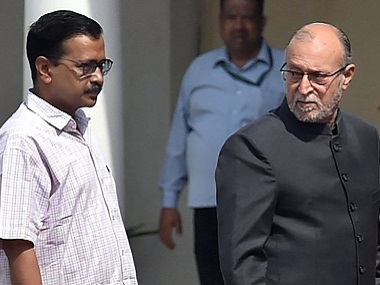Is Delhi a city-state or a Nizamate? Is it a Union Territory or the National Capital Territory? Thanks to the judgment passed by the Constitution bench of the Supreme Court in Government of NCT of Delhi versus Union of India, we now have the answer — it is very much a city-state (but not a full state) and it is very much the National Capital Territory (at least for now). There are two underlying causes that gave rise to this dispute: The most immediate one is the political competition between the Aam Aadmi Party and the Bharatiya Janata Party. The former is in power at the NCT, whereas the latter controls the levers of the Union Government and Delhi’s municipal councils. One is the political start-up (or maybe upstart), the other is the established incumbent (but likes to believe it’s the insurgent). There’s bound to be conflict. The other, long term source of the problem is the shoddy drafting that went into Article 239AA into the Constitution. Like the 73rd and 74th Amendment, it half-delivers on the promise of greater devolution of powers to the residents of Delhi, but in effect creates an administrative quagmire. The constitutional recipe for division of powers between state and Centre is turned into an unappetising khichdi featuring too many authorities with discretionary and concurrent powers. At the best of times, this makes governance difficult. [caption id=“attachment_4670421” align=“alignleft” width=“380”] File image of Arvind Kejriwal and Anil Baijal. PTI[/caption] The ongoing tussle between the Delhi government and the lieutenant-governor was exacerbated by a terribly reasoned Delhi High Court judgment which
effectively declared the LG the Nizam of Delhi who rules the NCT at his discretion, “aided and advised” by the elected Council of Ministers. In appeal, the Supreme Court had to first resolve the constitutional issues at stake — something that has taken about three years after the reference to decide. What the judgments say The three opinions of the judges on the Constitution Bench are more or less identical in conclusions, save for minor differences in approach through which they have arrived at those conclusions. They have concluded that while Delhi is not a “state” for the purposes of the Constitution in the same way that Tamil Nadu or Assam are “states”, it is also purely not a Union Territory like the Andaman and Nicobar Islands or Chandigarh. Delhi’s administrative arrangements are sui generis — necessitated by the peculiar nature of the city as the capital and its subsequent growth as a city. More importantly, they have tried to draw boundaries for the L-G’s exercise of powers and discretion. This comes in both procedural terms as well as substantive limits. The L-G is not an independent authority with the power to halt the functioning of the government on his own simply because he takes a different view of the matter than the chief minister and his Council of Ministers. He has to first consult with the Delhi Council of Ministers in good faith, and if he finds that his concerns are not satisfied, he may refer the issue to the president. Even so, there are some substantive limits that the Supreme Court has tried to set out in this case as to on what basis the L-G may refer a matter to the president under clause (4) of Article 239AA. While Chief Justice Dipak Misra uses the terms “exceptional circumstances” and asks the L-G to keep in mind “the standards of constitutional trust and morality, the principle of collaborative federalism and constitutional balance, the concept of constitutional governance and objectivity and the nurtured and cultivated idea of respect for a representative government”, Justice DY Chandrachud uses the more prosaic “substantial issues of finance and policy which impact upon the status of the National Capital or implicate vital interests of the Union” and Justice Bhushan says the even more terse “when it becomes necessary to safeguard the interest of the Union Territory.”. All three make it quite clear however, that the LG’s power to refer a matter to the President has to be exercised only in exceptional circumstances and not as a matter of routine. With the reference being limited to the constitutional questions, the judges would not have been advised to go any further in trying to draw clearer boundaries on this. This will have to emerge on a case-by-case basis. That said, the Supreme Court’s interpretation of Article 239-AA rests on sound foundation. What comes next In arriving at their conclusions, the judges have not just gone by interpretational techniques and precedents, but also the fundamental principles that underpin the constitutional government in India — parliamentary democracy and federalism. It was necessary to go into these issues because the conflict between the L-G and the Delhi government was not driven purely by personal dislike or partisan concerns. The AAP’s success in Delhi is driven to a large extent by the frustration with dysfunction in Delhi’s governance. This dysfunction can also be traced to the problematic drafting and compromised positioning of Article 239AA, and although the Supreme Court has not fully resolved all issues, it has set the framework for addressing them. Needless to say, irrespective of who declares victory, this judgment will not resolve the current, ongoing tussle between the L-G and the AAP-ruled Delhi government. The specific cases which resulted in this reference to the Constitution still have to be decided by the benches of the Supreme Court and the meaning of the substantive limits on the L-G’s powers will become clearer as these case are decided. One hopes, for the sake of the residents of Delhi, it won’t take another three years.
Irrespective of who declares victory, this judgment will not resolve the current, ongoing tussle between the L-G and the AAP-ruled Delhi government
Advertisement
End of Article


)

)
)
)
)
)
)
)
)



